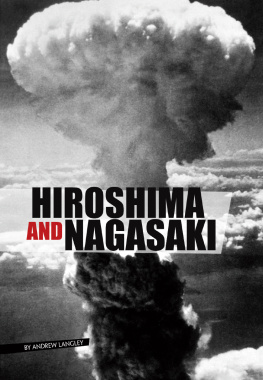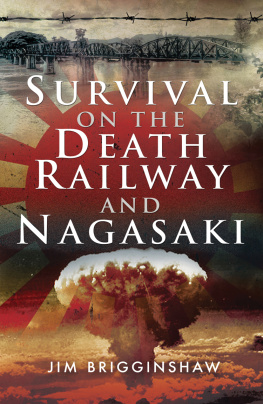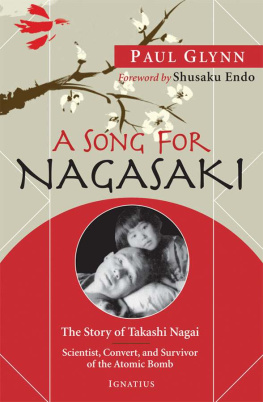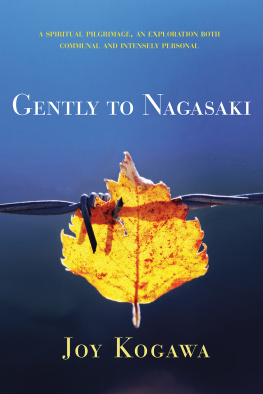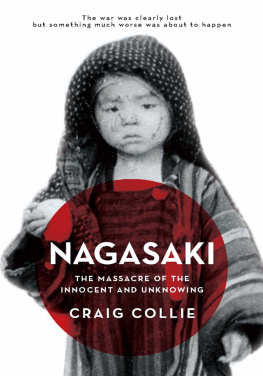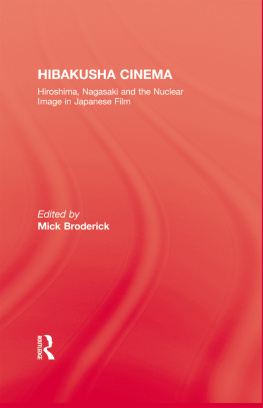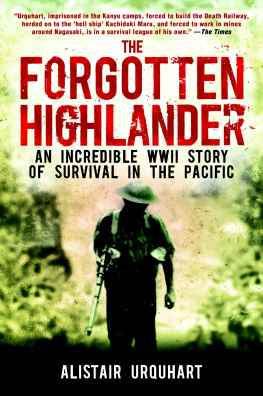
The Dream of Christian Nagasaki
World Trade and the Clash of Cultures, 15601640
Reinier H. Hesselink

McFarland & Company, Inc., Publishers
Jefferson, North Carolina
LIBRARY OF CONGRESS CATALOGUING DATA ARE AVAILABLE
BRITISH LIBRARY CATALOGUING DATA ARE AVAILABLE
e-ISBN: 978-1-4766-2474-7
2016 Reinier H. Hesselink. All rights reserved
No part of this book may be reproduced or transmitted in any form or by any means, electronic or mechanical, including photocopying or recording, or by any information storage and retrieval system, without permission in writing from the publisher.
Front/back cover images: Ohato landing of Christian Nagasaki with a view of the Jesuit mission at Morisaki, detail of a pair of screens depicting Chinese and Portuguese ships, owned by Kyushu National Museum. Photographed by Shinichi Yamasaki
McFarland & Company, Inc., Publishers
Box 611, Jefferson, North Carolina 28640
www.mcfarlandpub.com
To Tomie and Klaertje
Acknowledgments
This book has involved countless trips that took me several times around the world. Wherever I went in Asia, America, or Europe, I have encountered genuine kindness, helpfulness, and all kinds of generous support. People have selflessly received me (a total stranger, usually a foreigner, often a poor linguist, frequently an ignoramus, mostly a mediocre conversationalist, and always an awkward socializer) into their houses, their libraries, their archives, and their universities or research facilities.
They have asked me to sit down, listened to me with patience, answered my questions with forbearance, lodged and fed me generously, and finally showed me their treasures, pulled them out of vaults, carried them to my desk, allowed me time to study them, and explained their meaning to me when I was lost. Living the research for this book provided a powerful antidote to the pessimistic conclusions I draw about mankind when I depend on my written sources only.
The Historiographical Institute of the University of Tokyo is one of the places to which I owe my life as a scholar. Both as an institution for the storage of historical knowledge about Japan as well as a marketplace for new ideas, I do not know of any institution that can equal it in the whole world. The people who make up its personnel are among Japans most learned historians, and they have a decidedly uncommon tradition of welcoming and helping scholars from all over the world.
At the Institute, I depended on Professors Gonoi Takashi, Komiya Kiyora, Matsui Yko, Matsukata Fuyuko, Oka Mihoko, Yokoyama Yoshinori, and Yukutake Kazuhiro. There, I also had the opportunity to meet and/or listen to presentations by Professors Kishino Hisashi, Miki Seiichir, Takase Kichir, and the late Juan Ruiz de Medina. In Kyoto, Professor Gonoi introduced me to Professor tsuka Mitsunobu, the editor of the Zangeroku and an expert on the Japanese language of the Momoyama period as recorded by the missionaries.
The Kirishitan Bunko on the eighth floor of Sophia University Library is another place that has been indispensable for this book. This is a little known oasis on a busy campus, where I have had the privilege to meet its former librarian, the formidable Ms. Tsutsui Suna. Here, within a few steps, researchers have available to them most of the Japanese as well as Western source materials on Christianity in Japan, and much of the secondary literature in a great variety of languages. Other friends at the university who have helped me include Michael Cooper, former editor of Monumenta Nipponica, and Bettina Gramlich-Oka, one of the journals present editors.
At the beginning of my research, I spent a year affiliated with Nagasaki University. It was the horrified expression in the eyes of my sponsor Professor Himeno Junichi when he heard me pontificate about my plan to write a history of Nagasaki, that made me realize I should redefine my project as a history of Christian Nagasaki. Professor Himeno has been a loyal friend and supporter of my research ever since. At Nagasaki University, I also depended on Professors Toyama Mikio, Wakaki Taiichi and Yamaguchi Takamasa for their expertise on Nagasakis history.
Coming to Lisbon in 2008, I was warmly received by Professor Joo Paulo dOliveira e Costa in his Centro de Historia de Alem Mar, another stimulating environment full of scholars dedicated to Portugals overseas history. At CHAM, I met and was helped by Sophia Diniz, Jessica Hallett, Suzanna Mnch Miranda, and Madalena Ribeiro. At Portugals National Archive Torre de Tombo, I depended on Hugo Crespo and Professor Fernanda Olival of Evora University. Outside of academia, but very relevant for my research, I was fortunate to meet Matilde and Francisco Gago, who opened up their house and family archive to me.
During my visits to Spain in 2005, 2008, and 2009, I depended on Professor Geoffrey Parker for advice on Spanish archives, and on Juan Francisco Torres Arce and Kobayashi Yko for providing lodging for my family and myself. In Holland, Forum Booksellers under its new management by Laurens R. Hesselink continued the company tradition of giving me access to whatever I needed from their collection of rare and valuable manuscripts and books.
I was invited to present parts of my research to the faculty of Nagasaki University in April 2004, the Center for Asian and Pacific Studies at the University of Iowa in November 2004, the Department of History and Phi Alpha Theta at the University of Northern Iowa in April 2005, the Nagasaki Museum for History and Culture in June 2006, the Department of Chinese and Korean Studies of the Eberhard Karls Universitt, Tbingen in October 2008, and the Centro de Histria de Alem Mar of the Universidade Nova de Lisboa in February 2009. In Canada, I was asked to take part in the research group organized by Guy Poirier, Textes missionnaires dans lespace francophone (201113), which forced me to brush up on my French when presenting my ideas on the Jesuit letters from Japan. In March 2014, I was invited by David Howell to give a presentation of my research on Nagasaki to the Edwin O. Reischauer Institute at Harvard University.
At the University of Northern Iowa, I depended on Linda Berneking and Rosemary Meany, who processed my endless Interlibrary Loan requests, and on Professors Kenneth Atkinson, Charles Holcombe, Robert Martin, and Charlotte Wells, who were always ready to help and share their expertise with me. I am grateful, also, to the students of my seminars, Christianity in Japan and European-Asian Connections in the 16th and 17th Centuries for their forbearance of my hobby horses and their stimulating comments.
For financial support to travel, retrieve documents, study, and write in Alcala de Henares, Belem, El Escorial, Evora, Kobe, Lisbon, Madrid, Nagasaki, mura, Rome, Salamanca, Serpa, Sevilla, Simancas, t Goy, The Hague, and Tokyo, I am indebted to the University of Northern Iowa Professional Development Assignment Committee (2002), the University of Northern Iowa Summer Fellowship Committee (2004), the Kajima Foundation (2005, 2006), the National Endowment for the Humanities (20089), and the Japan Foundation (200910).
I also owe a great debt to my colleagues, friends, and relatives, the readers of chapters or parts of this book, who provided me with valuable feedback and much needed encouragement: Beth Berry, Frits Hesselink, Herman Ooms, Geoffrey Tudor, and Stephen Vlastos. Special thanks are due to Kate Wildman Nakai, professor emerita of Sophia University, who read most of the manuscript while it was first being brought into this world (and was much in need of a midwife), and to Larry Rogers, professor emeritus of the University of Hawaii at Hilo who proofread the whole manuscript just before it was due to be delivered to the publisher. My daughter Saskia Hesselink not only read through and commented on the manuscript in its various stages, but also contributed her drawing skills to produce the maps. All questionable opinions and/or mistakes remain of course my own responsibility.
Next page

